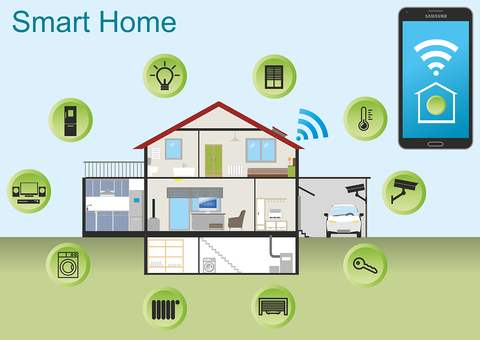You must have heard talks about a future where all devices are connected to each other, constantly communicating and sharing vita information. In a nutshell, that is what The Internet of Things involves. It promises to change the way we live, go to work, study, and even interact in our social cycles. But what is the Internet of Things? Keep reading to learn more.

What is the Internet of Things?
Initialized as IoT, the Internet of Things represents a world where physical objects merge with the virtual world. Both machines and devices are interconnected via their private networks and the Internet. They are fitted with sensors that gather information from their surroundings, take it through their analysis mechanism, and share relevant data.
The entire process takes place automatically without requiring human intervention. You even have the option of controlling the devices remotely if desired. For instance, you can install an IoT smartphone app to issue commands to your network.
For most people, when they hear about IoT, they tend to assume that it is a wild concept that is achievable through just certain devices. The reality is that you can transform practically all devices to an IoT device, provided it can connect to the Internet and can gather information.
An example of IoT is a lightbulb that you can switch on/off using a smartphone app. The same is true for your home's smart thermostat, motion sensor, or even the connected streetlights.
You can view IoT from a basic point like a kid's toy or a sophisticated point of view like a driverless automobile. Due to technological development, it has become possible to fit many IoT devices in certain larger objects. For instance, modern jets feature smaller IoT components that gather information to ensure the overall jet operates optimally.
How widespread is the IoT?
The overall structure of IoT architecture depends on it being as big as it can get. The BIGGER, the BETTER. The total number of connected things currently surpasses the human population.
Different tech researchers predict that by 2025, close to 4o billion things will have joined the IoT infrastructure. Whereas automotive and industrial equipment holds the most potential for IoT, interconnected homes equally play a major role. In particular, wearable devices may become the norm, regularly transmitting data about the wearer.
Did you know that every 30 seconds, an average of 127 devices connect to the Internet? Gone are the days when "things" represented just phones and computers. In the 21st century, literally, anything with connectivity capabilities such as vehicles, diapers, tennis rackets, and homes makes a part of "things." Furthermore, biological things, including livestock, crops, pets, and clothing on your body, are part of the ecosystem.
Should you care about IoT?
Yes, you should.
The Internet of Things holds immense potential for homes and businesses alike. With the emergence of a smart home, you are set to benefit in the following ways:
- Savings on energy hence cost reduction.
- Improved security with automatic updates
- Luxurious lifestyle as you direct devices from voice commands
- Positive impact on the environment
- Better control and monitoring
To wrap up, embracing IoT means installing a reliable home Internet that facilitates the connectivity of your home devices. You require a stable Internet Service Provider such as Nomad Internet for this. Contact us today for high-speed Internet installation.
